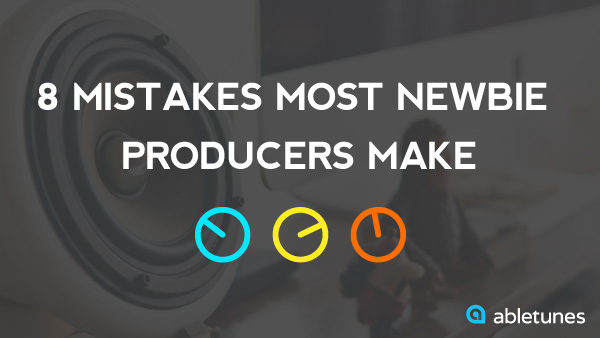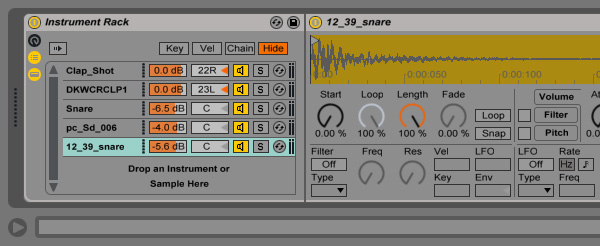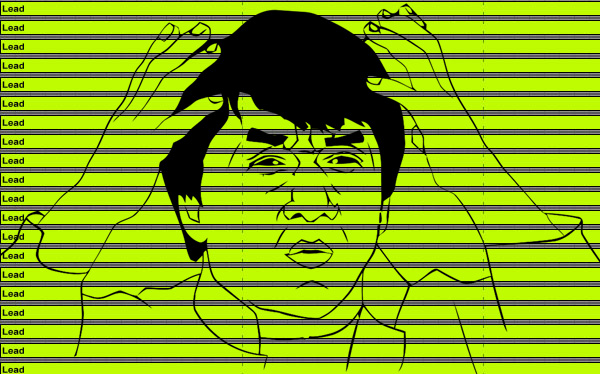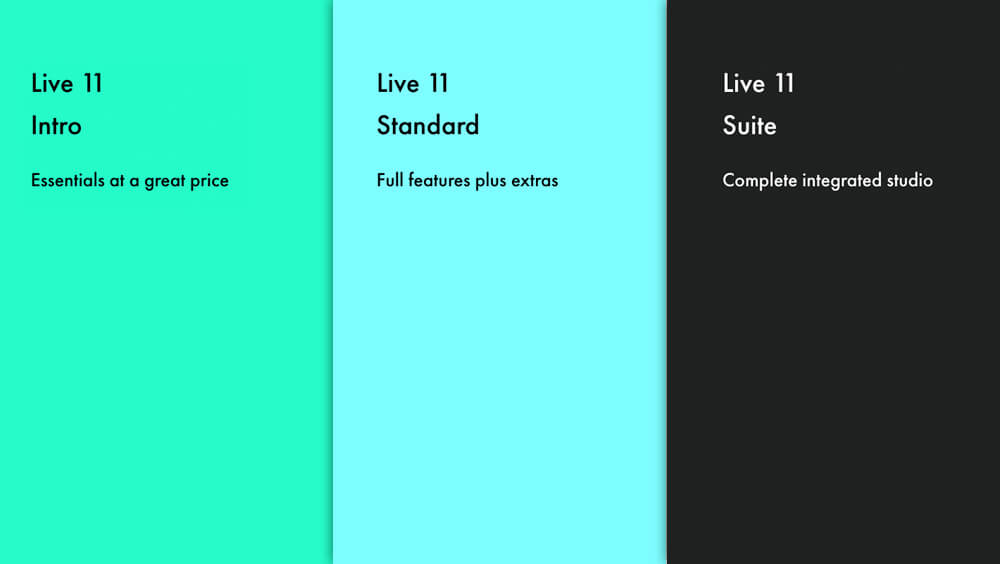8 Mistakes Most Newbie Producers Make (And How to Avoid Them)

There’s a learning curve to everything – and music production is (obviously) no exception! All newbie producers make mistakes, either at the beginning of the session, or at some time during the sound design / mixing stage. We can all learn from mistakes – but why not try to completely avoid some common ones from the very beginning?
Recently, we had a few “final touch” orders from different customers – well arranged tracks with catchy melodies and plenty of potential. However, the lack of the producers’ experience made these tracks sound thin and flat.
So, we checked their projects to better understand what we were dealing with …and quickly noticed some very similar, reoccurring mistakes. In this post, I’ll try to cover the most popular newbie mistakes – providing some tips along the way on how to outright avoid them.
1. Too much processing
The first thing that strikes the eye is tons of plugins on each track / group (including lots of various racks, 2-3 compressors, equalizers and reverbs with some random default presets). This is usually the easiest way to recognize a newbie producer. I understand that it sounds good if it sounds good (and therefore doesn’t matter how you got to that sound), but – not in this case. Most of the tracks sounded terrible and objectively over-processed.

Our suggestion: don’t apply EVERY plugin you have and EVERY technique you see. Listen to the sound carefully, understand its problems, THEN choose the appropriate instruments to fix them. If you hear too many problems, the main issue is in the initial sound – something no amount of processing can repair.
Learn how each effect and plugin affects the signal chain – no amount of plugins will get you to the sound you’re looking for if you don’t know how and where to use them in the first place.
2. Low quality samples and poor sound choices
The second problem is samples – especially kick drum samples. Most newbies don’t understand the true importance of the kick drum. In 95% of “final touch” orders, we have to change it because it either can’t be heard well or it sounds too thin (or hard) in context of the track – or it simply just doesn’t work against the bass-line and the other instruments in the mix altogether.
Our suggestion: First of all, check out this post on choosing the right kick drum and make sure it works great with your track’s bass-line.
Also pay attention to other samples in the mix (snare, ride, hi-hat, effects, etc) – don’t just grab the first available sample. Spend some time searching for something that works perfectly. Play with different samples, adjust ADSR settings, try to tune them, etc.. Sometimes a simple transposition to + (-) 2 works wonders. Be creative!
Same as the previous issue, lots of projects we receive contain problems with the instrument sounds. The major issues aren’t necessary in the processing itself, but rather the fault of an initial synth preset that sounds too thin / simply doesn’t fit within the song.
Our suggestion: carefully spend time choosing the perfect tone for each instrument, layer, effect and every sound in your track. Learn synthesis (or at least some basics) so you can tweak presets more easily and confidently. Listen to your favorite tracks – analyze them and try to get as close to their sound as possible.
3. Incorrect Side-chain Compressor settings
It’s hard to imagine an EDM track that doesn’t contain this technique. All of the projects we receive have side-chain compression on track and groups – usually with major problems in the settings. Typically, we see default ‘Attack and Release’ settings with a high ratio and threshold. Yes, it works (and everything sounds fairly decent), but many producers underestimate the impact a side-chain compressor has.

Our suggestion: Don’t just add side-chain compression to make room for your kick drum (or for a simple pumping effect). Spend some time setting correct compressor settings (focusing especially on the release time to make the pumping effect more driving and “breathing”). Its settings can dramatically influence the groove of your track.
Sometimes, you can get better results using the EQ setting of Ableton’s compressor – or just by experimenting with various side-chain signal shapes (different from your main kick drum).
4. Unnecessary layering

This is a common issue in almost all of the projects we receive. Layering is a necessary technique in current EDM, but most newbies overdo it. In one project, we found upwards of 3 different layers of snare samples – saturated in EQs and other processing plugins – and it STILL sounded horrible. By taking a few moments to change it to a better snare drum sample, we eliminated a handful of issues all at once. So, if you don’t have much experience, don’t spend so much time layering and processing. Find the right sample that doesn’t require so much post-work to achieve a better result with no superfluous extra production needed.
5. Too much layering
When it comes to instrument tracks, we’ve also noticed that many of you use FAR too many layers. Even in best-case examples, too many layers just introduce noise, mud and other issues into your mix.

Our suggestion: Much like the first case, listen to how your main instrument sounds and determine WHAT exactly you want to add it – perhaps some mid-range layers to make it fuller, plucked sounds to add more attack or some wide synth patterns to achieve a greater stereo spread.
Of course, you can simply experiment with different presets, but don’t forget – the more layers you add, the more equalization you need to make them sound cohesive. Think twice before you add a random layer “just because” 🙂
6. Lack of layers
On the other hand, sometimes we see many newbies using just one or two basic synths for their main lead. Usually, this sounds very flat in comparison to their reference tracks.
Our suggestion: The current EDM sound is very big and massive, and a common way to achieve that sound is by layering to make a massive stack of synths that all complement each other (and form a full and desired sound). However, here you need to maintain a good balance. Listen to each and every instrument in your song and compare it to your favorite tracks. This is the easiest way to determine exactly what you need to add.
7. Incorrect panning
We all want to make our productions sound wide and big. However, you don’t need to make each track SOUND big in order to achieve that. Usually, we handle projects with wide stereo mid-bass, wide stereo synths and wide stereo vocals. As a result – we hear a wide mix, but vocal clarity is lost behind the bass and synth.
Our suggestion: Every track is different – and sometimes, with proper equalization – this may work. However, we recommend to think about the location of the main elements in the stereo field. Of course, there are no golden rules – so the best way is by using reference tracks with similar instruments and by experimenting with various panning settings (i.e. vocal in center – wide synth or vice versa).
8. You didn’t cut unnecessary low end
Finally, a simple but very common mistake. Most newbies keep low end on their synths, cymbals, pads and other mid / high range instruments. This inadvertently leads to the entire mix becoming muddy and cluttered. When we ask our clients why they didn’t cut the lows, we often hear responses such as “the hi-hat only has a little low end so I didn’t bother”. Perhaps, but imagine how that same hi-hat will sound on a huge sound system at a club. Just a few dBs of untouched low frequencies on each instrument begin to pile up – and can result in a boomy or muddy mix.

Our suggestion: Well, it’s simple – cut your unnecessary low frequencies! Just be careful not to overdo it – don’t accidentally cut the frequency range you ACTUALLY want to hear.
That covers the 8 most common mistakes we see in novice productions! While some of them seem very obvious, we wouldn’t have written this post if we didn’t see them on a regular basis 🙂
Article by Andy



